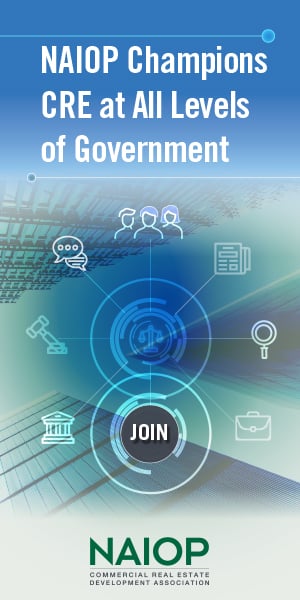#WFH Now, But We’ll Return to the Office

Overnight, the “where” and “how” of work completely changed for many of us.
In mid-March, office workers abruptly shifted their workspaces from cubicles to dining room tables, collaborating and socializing with colleagues through Zoom calls instead of gathering in meeting rooms or around the water cooler.
Open office concepts, collaboration spaces and shared amenities — once darlings of the modern office — are a distant memory. Almost overnight, the “where” and “how” of work completely changed for many of us.
It wasn’t long before we settled into this new routine and speculation started: Will we ever return? How will workspaces change? Is this the end of the office?
Many of us are now cautiously transitioning back and following social-distancing protocols, and I believe we’re seeing strong signs that the office is, in fact, here to stay.
I personally have mourned the synergy and strategy that comes from in-person collaboration. A recent article in the Wall Street Journal referenced the benefits of these spontaneous interactions — hallway conversations between peers that are much less likely to happen in a remote office environment. On-boarding new employees and enabling younger staff to learn from more experienced colleagues have presented big challenges, and some bosses fear productivity losses — however small — will impact the bottom line.
Employees miss being in the office, too. A Gensler study of 2,300 workers across the U.S. revealed that 44% say they want to return to the office five days a week, with 26% preferring one or two days at home and just 12% saying they’d prefer to work from home all five days. Respondents say they miss “collaborating and staying up to date on others’ activities” and emphasized the value of physical presence and connections.
I believe what we’ll see in the future is a hybrid of virtual and office environments, with workers splitting time between remote locations and coming into the office for dedicated opportunities to convene teams.
A McKinsey study found that “organizations could create workspaces specifically designed to support the kinds of interactions that cannot happen remotely,” and companies will examine how space locations and layouts contribute to workplace culture and productivity.
Tech firms Twitter, Facebook and Google have already announced that employees can work from home through mid-2021 at minimum, or perhaps indefinitely. In Boston, only 5% of office workers have returned to their workspaces, with most workers expecting to continue operating remotely through at least January.
Naturally, this has contributed to some anxiety about the future of office; however, many of these tech firms and urban offices have densely occupied footprints that do not allow for enough physical distancing to accommodate current health safety needs. Offering flexible policies accommodates those who are eager to return to the office and others who choose to continue teleworking, while giving employers time to re-think their office space designs.
Research by GWL Realty Advisors, our parent company, notes that office demand is not static. Many firms are growing, especially technology firms that have even seen demand for their products or services expand during the global pandemic. These companies will need even more office space in the coming years, even if they allow for some flexibility when it comes to working from home when appropriate.
NAIOP, through the National Forums, conferences and research, will continue to keep its finger on the pulse of office demand, how it is changing and what we can expect as more workers return to the office. I invite you to access our research briefs on the topic and share your experiences during our CRE.Converge Virtual conference, October 7-8, online.
We’re also planning a dedicated series of virtual discussions on the future of office in November 2020, featuring high-level thought leaders on such critical topics as tenant requirements, shifts in office locations, investment trends, and space solutions — from traditional leases to flexible space. If you’re in office real estate, these are conversations you won’t want to miss.
Larry Lance, Executive Vice President, Everwest Real Estate Partners
2020 NAIOP Chairman




